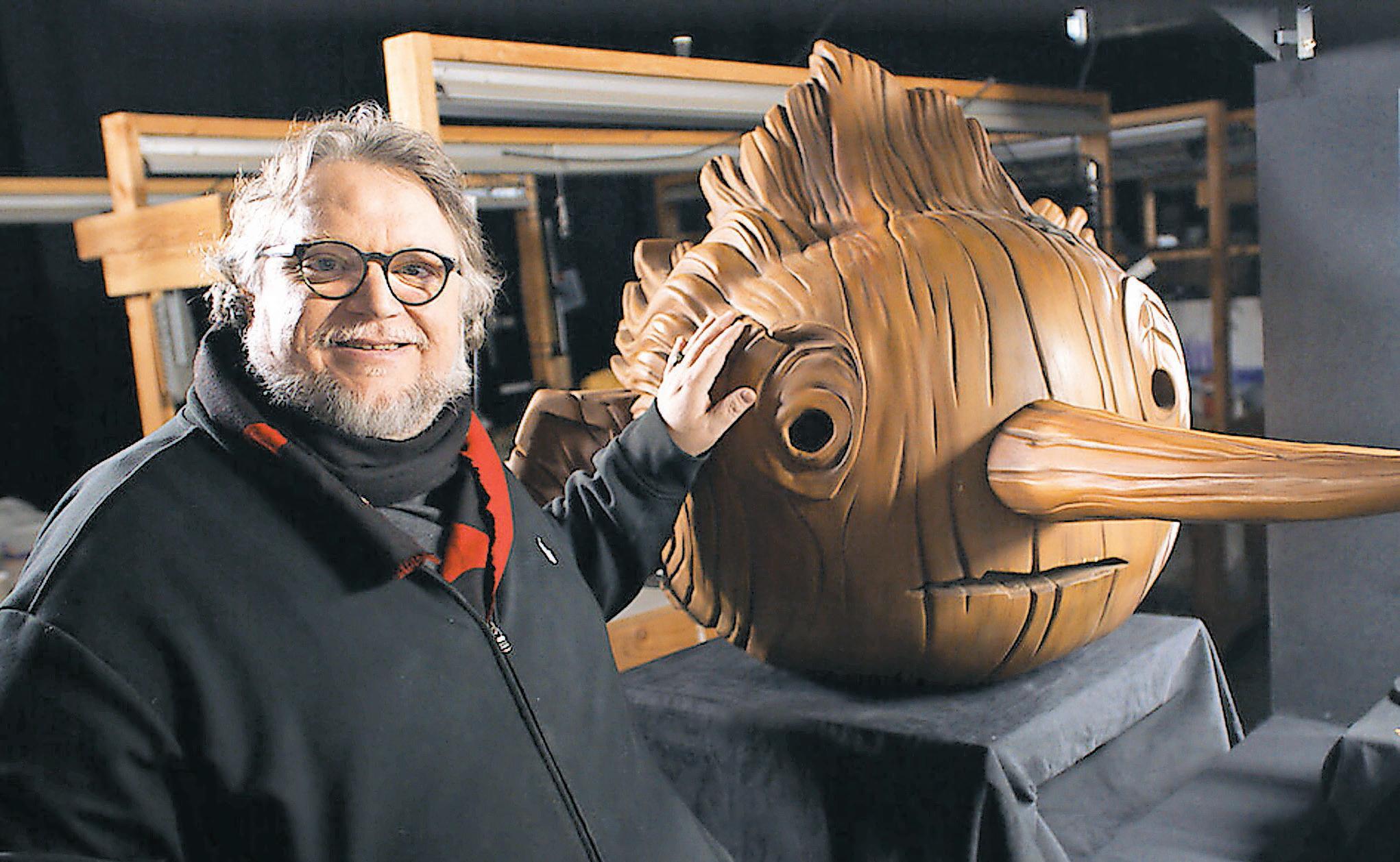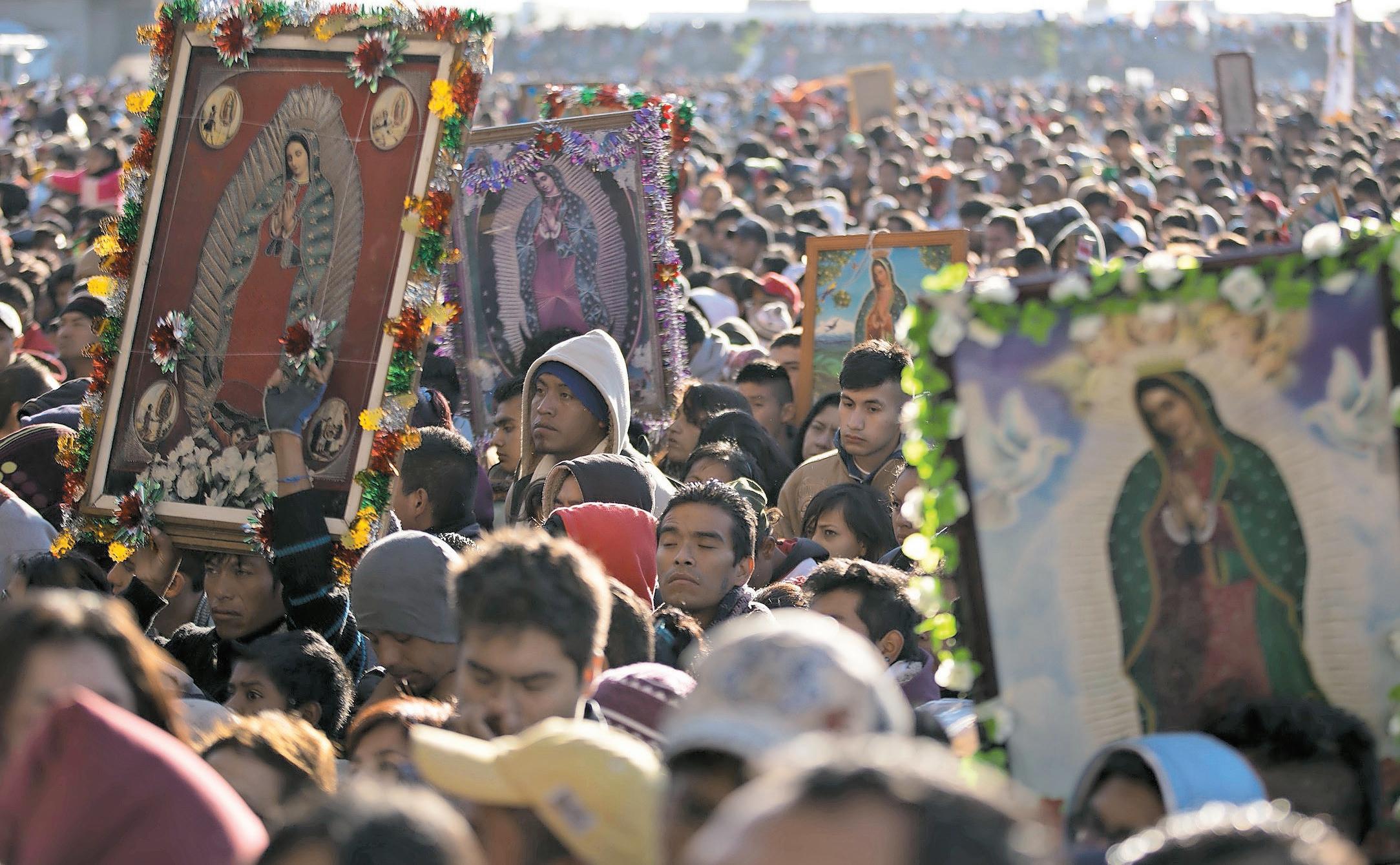
12 minute read
Guillermo del toro delivers A new pinocchio
Del Toro takes his ‘Pinocchio’ to very dark places
Advertisement
Jocelyn Noveck – The Associated Press
Let’s face it, “Pinocchio” has always been an odd choice for a children’s morality tale.
Of course, lying is wrong. But that’s not the only message the story sends. Even the classic 1940 Disney version — lighter and more kid-friendly than the 1883 Collodi tale — still sends the message that if you’re not “good,” you don’t deserve to be human.
“A boy who won’t be good might just as well be made of wood,” the beneficent Blue Fairy admonishes Pinocchio in that film. Really? What happened to the idea that “to err is human?” Not to mention second chances, or learning curves? And what does “good” mean, anyway? Have they heard of value relativism? But we digress.
Because now comes Guillermo del Toro, with his blazing creative talent, to really stir things up. And boy, this is not your Disney “Pinocchio” — not the 1940 classic nor the remake of a few months ago. How will your kid feel about fascist salutes (or you about explaining them?) A guy named Mussolini? Bombs falling from the sky? A father handing a gun to his son and saying “Shoot the puppet?” (Yes, sweet Pinocchio — THAT puppet.)
Of course, del Toro, whose take on “Pinocchio” is so distinct that the movie is called “Guillermo del Toro’s Pinocchio,” has just the visual command you’d expect, partnering with co-director Mark Gustafson in this gorgeous stop motion project with a starry voice cast (including three Oscar winners — Christoph Waltz, Cate Blanchett and Tilda Swinton.) The movie often looks stunningly beautiful, in color and texture. And you’ll want to get on a plane right now and find the Italian village where Geppetto lives, with cobblestoned alleyways framed by snow-capped mountains jutting out in the mist.
Pinocchio, too, is way more interesting-looking than the blue-eyed, bow-tie wearing puppet we’re used to. He’s a lanky masterpiece in striated pine, with wooden curls, too, and something about him is heartbreakingly lovable. Maybe it’s because he makes mistake after mistake. And to err is … oh, never mind. We first meet Geppetto (David Bradley) as the happy father to a real son, Carlo. “All they needed was each other’s company,” says the narrator, namely Sebastian J. Cricket, voiced by Ewan McGregor. They spend their evenings reading stories by the
In fact, fire, and Carlo accompanies Geppetto to his job restoring a huge Jesus altarpiece in the church. It’s there that tragedy The film is clearly not strikes one day; a warplane aimed solely at kids, drops a bomb onto the but rather is banking church, killing Carlo. Geppetto on the fact that withdraws to drinking and adults, too, will be mourning. drawn to the striking In grief, Geppetto cuts visuals and mature down a pine tree and makes a themes at play. puppet. In the night, the Wood Sprite (Swinton, not to be confused with her sister, Death, also Swinton) comes to visit. As in other versions, she asks the cricket to watch over Pinocchio and serve as his conscience. Geppetto brings the puppet to church, but he’s greeted with hostility: “Where are his strings? Who controls him?” At home, Pinocchio wonders why everyone loves the wooden Jesus but not him. A fascist town leader pronounces Pinocchio a “dissident” and “independent thinker.” Not as a compliment. Like in other versions, Pinocchio gets caught up with a money-hungry impresario, Count Volpe (Waltz) who puts him in a puppet show. Unlike
The Blue Fairy in Guillermo Del Toro’s Pinocchio
other versions, one audience member happens to be Il Duce (Mussolini.) Also unlike other versions, he orders Pinocchio shot. Pinocchio also gets hit by a truck. Luckily, Swinton’s Death keeps sending him back to life.
If this seems a bit unsavory for the younger kids, you ain’t seen nothin’ yet — Pinocchio ends up at a fascist military camp, where the boys are set against each other in deadly war games. Compared to this section, the time he and Geppetto later spend in the belly of a whale seems rather quaint.
But “Guillermo del Toro’s Pinocchio” is clearly not aimed solely at kids, but rather is banking on the fact that adults, too, will be drawn to the striking visuals and mature themes at play.
Del Toro is also making clear references to the danger of groupthink. Indeed, he seems to have chosen the background of fascism to point out that the narrowminded townspeople who suspect Pinocchio because he’s different are the real puppets, not Pinocchio.
“Guillermo del Toro’s Pinocchio,” a Netflix release, has been rated PG by the Motion Picture Association of America “for dark thematic material, violence, peril, some rude humor and brief smoking.”
Nancy Pelosi’s career chronicled in new film by her daughter
Michael Balsamo – The Associated Press
NEW YORK — For Alexandra Pelosi, the brutal attack on her father earlier this year was a culmination of vitriol that had been building for decades. Her family’s name, she says, has been weaponized for years, turned into a curse word for Republicans.
Then, in October, a man broke into the family’s San Francisco home and attacked Paul Pelosi with a hammer, leaving him unconscious in a pool of his own blood.
The bubbling political rhetoric that led to that moment is chronicled in a new documentary premiering Tuesday night on HBO. The film, “Pelosi in the House,” directed and produced by Alexandra Pelosi, the youngest of House Speaker Nancy Pelosi’s five children, follows the elder Pelosi’s career over three decades.
The film offers a rare behind-the-scenes look at her political life, chronicling major milestones from her election to Congress in 1987 to becoming the first female House speaker in 2007 to the insurrection at the U.S. Capitol on Jan. 6, 2021, as Congress was voting to certify Joe Biden’s presidential win.
“There’s a thread from the very first time they started taking ads out against Nancy Pelosi and turning her into a witch and turning our last name into a curse word. You can follow that thread 20 years later to my parents’ doorstep to my father getting attacked,” Alexandra Pelosi said in an interview with The Associated Press.
Pelosi’s film follows her mother, literally, through the Capitol and behind the scenes as she negotiates key votes for major pieces of legislation. It also depicts threats the family received, including a severed pig’s head that was delivered to the speaker’s San Francisco home just days before the attack on the Capitol.
The camera was also rolling on Jan. 6 as the House speaker prepared for the certification of the presidential election and as rioters began smashing through the doors and windows, violently shoving past overwhelmed police officers, leaving many officers bruised and bloodied. The film includes extended clips recorded as Pelosi and other congressional leaders are rushed out of the Capitol and evacuated to Fort McNair, a nearby Army base. It captures frantic leaders calling the defense secretary, attorney general, then-Vice President Mike Pence and other officials trying to get assistance to the Capitol. Some of the footage was played during a hearing of the House panel investigating the attack on the Capitol. Alexandra Pelosi and her team provided the
In fact, footage to the committee. “When they took Nancy Pelosi out of the chamber, she didn’t even get to take her Pelosi’s film follows cellphone. They rushed her out. her mother, literally, And she was making calls to the through the Capitol defense secretary, the attorney and behind the general, the vice president, and scenes as she I thought there should be a negotiates key votes record of this,” Alexandra Pelosi for major pieces of said. legislation. “She didn’t get to take the House clerk, who has a transcript of all this, to record what was happening. This was historic what was happening, and somebody needed to have a record of what was said,” she said. Among those historic moments: discussion about whether to move the entire Congress – all 100 senators and 435 members of the House – by bus to Fort McNair and convene the joint session there to continue the certification of the election. For the House speaker, the attack on the Capitol
Documentarian Alexandra Pelosi is releasing a new film focusing on her mother’s rise in Congress over three decades. >Photo by Andy Kropa/Invision/ AP, File
Alexandra Pelosi, documentary director
was one of the worst moments of her career, as her panicking staff members fled for cover, hiding silently under tables as rioters trashed the speaker’s office and called out “Nancy!” as they searched for Pelosi.
“She thinks that the Capitol is sacred ground,” Alexandra Pelosi says of her mother. “That’s why January 6 really tore at her soul. Because to her, the Capitol is sacred ground, and the rioters literally pooped inside the sacred ground.”
Less than two years after that attack, a man broke into the Pelosi family home in San Francisco, roused the speaker’s husband and reportedly demanded “Where is Nancy?” Officers arrived at the home after Paul Pelosi called 911 and they arrested the intruder, David DePape. He appears to have made racist and often rambling posts online, including some that questioned the results of the 2020 election, defended former President Donald Trump and echoed QAnon conspiracy theories.

Pilgrims wait their turn to enter the Basilica of Guadalupe, in Mexico City. >AP Photo/Eduardo Verdugo, File

In fact,
Devotion to Virgin Mary draws millions to Mexico City shrine
María Teresa Hernández – The Associated Press
MEXICO CITY — It is one of the world’s most visited and beloved religious venues – the Basilica of Our Lady of Guadalupe, with a circular, tent-shaped roof visible from miles away and a sacred history that each year draws millions of pilgrims from near and far to its hilltop site in Mexico City.
Early December is the busiest time, as pilgrims converge ahead of Dec. 12, the feast day honoring Our Lady of Guadalupe. To Catholic believers, the date is the anniversary of one of several apparitions of the Virgin Mary witnessed by an Indigenous Mexican man named Juan Diego in 1531.
The COVID-19 pandemic curtailed the number of pilgrims in 2020. Last year, even with some restrictions still in place, attendance for the December celebrations rose to at least 3.5 million, according to local officials. Bigger numbers are expected this year.
For many pilgrims, their journey to the site is an expression of gratitude for miracles that they believe the Virgin brought into their lives. Around the basilica, some people light candles while praying in silence. Some kneel and weep. Others carry statues of the Virgin in their arms as they receive a priest’s blessing.
Among the first-time pilgrims this year was Yamilleth Fuente, who entered the basilica wearing a yellow scarf decorated with an image of Our Lady of Guadalupe.
Fuente, who traveled alone to Mexico City from her home in El Salvador, said that she was diagnosed with cancer in 2014 and recovered after praying to the Virgin. When she suggested making the pilgrimage, her husband and two children encouraged her.
“I’ve loved the Virgin my whole life. I even used to dream about her,” Fuente said. “My daughter’s name is Alexandra Guadalupe because she’s also a miracle that the Virgin granted me.”
For the Catholic Church, the image of the Virgin is a miracle itself – dating to a cold December dawn in 1531 when Juan Diego was walking near the Tepeyac Hill.
According to Catholic tradition, Juan Diego heard a female voice calling to him, climbed the hill and saw the Virgin Mary standing there, in a dress that shone like the sun. Speaking to him in his native language, Nahuatl, she asked for a temple to be built to honor her son, Jesus Christ.
As the church teaches, Juan Diego ran to notify the local bishop, who was skeptical, and then returned to the hill for more exchanges with the Virgin. At her suggestion, he left the hillside carrying flowers in his cloak, and when he later opened the cloak in the bishop’s presence it displayed a detailed, colorful image of the Virgin.
That piece of cloth currently hangs in the center of the Basilica, protected by a frame.
In an annotated edition of the apparition story, the Rev. Eduardo Chavez – a leading expert on the topic -- said the Virgin’s appearance occurred in a time of despair. By 1531, 10 years after the Spaniards’ conquest of the Aztecs, smallpox had killed nearly half of Mexico’s Indigenous population, wrecking their pre-conquest social and religious systems.
To many Mexicans, the Virgin’s image became a symbol of unity because her face looks mixed-race -- neither fully Indigenous nor European, but a bit of both.
Some academics have said that the devotion to Our Lady of Guadalupe intertwines Indigenous and Catholic beliefs, though the Catholic Church rejects this theory. At the foot of the hill that today accommodates the basilica was a temple for the goddess Coatlicue Tonantzin, and the date of the apparition coincided with an Indigenous festival.
On a recent day, numerous motorcycle taxis were parked on one of the esplanades outside the basilica. Abraham García, a 45-year-old driver from the nearby city of Nezahualcóyotl, was there, accompanied by more than 70 colleagues.
“We come year after year to thank God, the basilica and the Virgin, and to ask her for help,” he said. “This was a good year for us, so now we’ll leave even more blessed.”
Abraham García, a 45-year-old driver




